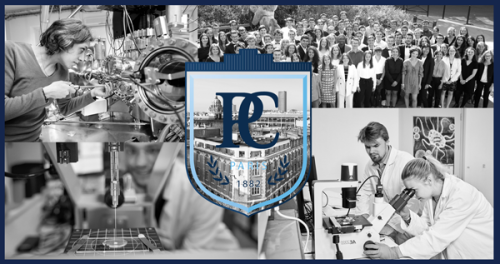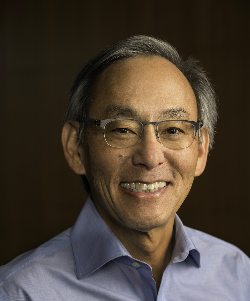Every year, an international committee of world renowned scientists gathers at ESPCI, and evaluates its research and teaching program. After a rich 5-year term, Michael Cates professor at Cambridge University is replaced by another prestigious scientist as chairman of the ISC: Steven Chu, Professor at Stanford University, co recipient of the 1997 Nobel Prize in Physics, US Secretary of Energy from 2009 through 2013. For Vincent Croquette, director general of ESPCI Paris, «it is a great honor to catch the attention of such a talented scientist, and there is no doubt it will help putting ESPCI under the spotlights, especially at the international level. Steven Chu also represents what is the DNA of ESPCI: multidisciplinarity: his Nobel Prize was in atomic physics, but he has also worked on polymer physics, biophysics, batteries and so much more! We do also think that his political experience and commitment on climate concerns will be an extraordinary example for our institution.


You are currently a professor at Stanford University. What is the current topic/focus of your research?
My current research topics are molecular and cellular imaging, nanoprobe synthesis for imaging, development of new methods of ultrasound imaging, new approaches to lithium metal batteries, electrochemical production of hydrogen and other energy technologies.
After such a long and distinguished career, what keeps you so passionate and involved in Science and Science Education?
The short answer is that I love to explore new areas in science. The best way to learn new fields is for me and my research group members to co-teach each other and to teach a new subject.
Every 5 -6 years, I go into new fields that are a mix of new technology development and applications in science. While my Ph.D. thesis was testing the Weinberg-Salam-Glashow model that unified electromagnetic and weak interactions using atomic physics, I went on to precision measurements using laser spectroscopy, optical excitons in condensed matter physics, laser cooling and trapping of atoms, atom interferometry, optical tweezers of individual biomolecules and applications in biology and polymer physics, single molecule FRET development and studies of translation, transcription, cell signaling and more. Since returning to Stanford from the Department of Energy, I began to synthesize improved nano-scale probes for molecular imaging in live cells and have begun a number of biological experiments. I am also working on battery research and other applications of electrochemistry, and am exploring other novel potential solutions to climate change.
You have also been a vocal advocate for increased research into renewable energy. In your opinion, how can scientists best influence governmental policies?
We have a duty to tell policy makers of the risks of climate change, and how science and technology can really change the energy and global sustainability landscape, and ultimately help in the research.
Why did you accept the position of President of the International Scientific Committee at ESPCI Paris?
I became convinced that the ESPCI is one of the crown jewels in scientific research in the world, and the research it does will have lasting impact in science and society. If I can help its missions, it would be time well spent.
Biography
Steven Chu is the William R. Kenan Jr. Professor of Physics and Professor of Molecular & Cellular Physiology in the Medical School at Stanford University. He is President of the American Association for the Advancement of Science. He has published numerous papers in atomic physics, polymer physics, biophysics, molecular biology imaging, ultrasound imaging, nanoparticle synthesis, batteries, and other electrochemical applications and energy technologies. He holds 18 patents and patents pending, with 15 patent filings since 2015.
He served as the 12th U.S. Secretary of Energy from January 2009 through April 2013. Prior to that, he was director of the Lawrence Berkeley National Laboratory, professor of Physics and of Molecular and Cell Biology (2004 to 2009), professor of Physics and Applied Physics at Stanford University (1987 to 2009), a member of the technical staff and then head of the Quantum Electronics Research Department at AT&T Bell Laboratories (1978 – 1987).
Dr. Chu is the co-recipient of the 1997 Nobel Prize in Physics for his contributions to laser cooling and atom trapping. He has received numerous other awards. He is a member of the National Academy of Sciences, the American Philosophical Society, the American Academy of Arts and Sciences, the Academia Sinica, and is a foreign member of the Royal Society, the Royal Academy of Engineering, the Chinese Academy of Sciences, the Korean Academy of Sciences and Technology, the National Academy of Sciences of Belarus, and a member of the Pontifical Academy of Sciences. He received an A.B. degree in mathematics and a B.S. degree in physics from the University of Rochester, and a Ph.D. in physics from the University of California, Berkeley, and 32 honorary degrees.